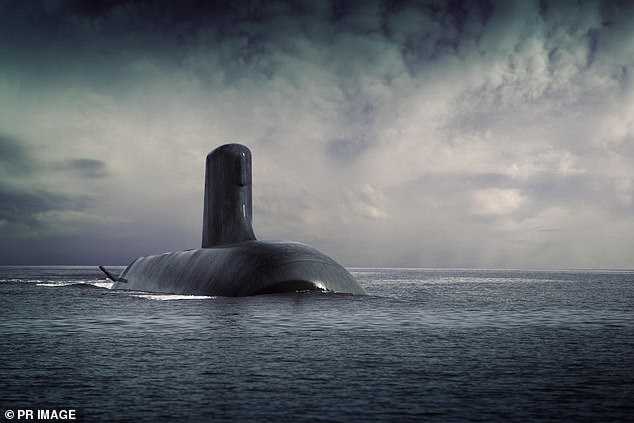Australian Submarine Program in the Crosshairs
From the beginning critics have abounded with regard to the French-Australian submarine program.
The program is clearly a challenging one, as the French Naval Group has a good track record on building attack submarines, but this program is to build one which Naval Group has never built. It is called the Short-Fin Barracuda submarine, which leverages aspects of the French Barracuda program.
There are major challenges associated with the program in terms of French and Australian cultural and work style differences. And these challenges will need to be overcome for program success. The program does offer the French a significant opportunity to update and modernize their approach to manufacturing submarines as the Australians are going to build a new yard, using techniques, technologies and work approaches significantly different than the French themselves.
A recent government auditing report highlighted that the program is behind schedule, although frankly, this is not unusual for a major design and build program like this one.
Max Blenkin in an article published by ADBR on January 14, 2020, the ANAO report was highlighted.
The Australian National Audit Office (ANAO) has released a report into the Project SEA 1000 future submarine program, finding that, while Defence has established appropriate procedures for the new submarines project, it is already running nine months late.
As a result, Defence cannot demonstrate that its spending of $396 million on design has been fully effective in achieving the program’s two major design milestones to date. Defence expenditure on design represents some 47 per cent of all program expenditure up to 30 September 2019, it said.
Under the SEA 1000, the Navy will acquire 12 advanced conventionally powered submarines to replace the six Colins boats. In April 2016, the government announced the designer would be French firm DCNS, now known as Naval Group.
At the time Defence cited a total cost of $50 billion, but in Senate estimates in November adjusted its figures to “in the order of $80 billion” with estimated sustainment costs of $145 billion out to 2080 in out-turned dollars which take account of estimated future inflation.
In its third review of the project, the ANAO said this was Australia’s largest single defence procurement ever, with success driven by preparations in the design phase. It said Defence had established the formal arrangements necessary for effective administration of the future submarine program through a strategic partnering agreement.
‘The program is currently experiencing a nine-month delay in the design phase against Defence’s pre-design contract estimates and two major contracted milestones were extended,’ the report reads. Those milestones are the Concept Studies Review, and the Systems Requirements Review.
Defence has also identified that delay in the program of more than three years will create a gap in submarine capability, and that planning for the current Collins class life extension to manage the risk of a capability gap remains at an early stage.
The ANAO said Defence highlighted differences in the commercial and engineering approaches of Defence and Naval Group, which it considers to have impacted on progress, but added that those differences were being managed.
In its response to the report, Defence acknowledged entering the Concept Studies Review later than intended. It said lessons from that review highlighted the need for additional time for Naval Group to meet Defence’s requirements for a high level of design maturity, thereby reducing costly uncertainties during construction.
These were major lessons learned from the Collins and air warfare destroyer programs,’ Defence said, adding that an extended schedule for remaining design work has been implemented under the Submarine Design Contract.
The five-week delay in entering the Systems Requirements Review in December was assessed as recoverable. ‘Importantly, the commencement of construction activities in Australia, and the delivery of the Future Submarines has not been delayed,’ it said.
UPDATE: On January 15, Defence released a joint statement from Defence Secretary Greg Moriarty, Chief of Defence Force GEN Angus Campbell, Chief of Navy VADM Mike Noonan, and Deputy Secretary National Naval Shipbuilding Tony Dalton.
The statement says that, in a previous report the ANAO “reported that Defence effectively designed and implemented the process to select an international partner for the…program”, and that “Nothing has altered this assessment”.
It added that, “In line with best practice and following the advice of the (Naval Shipbuilding) Advisory Board, Defence has continued to assess all of the risks that attend this highly complex program. At each stage, we are adopting relevant risk mitigation strategies. The ANAO acknowledges that Defence has taken steps to manage risks.”
And in an article published on January 20, 2020 by The Daily Mail, not unusually for them, went after the French partner of the Australian government.
Naval Group, which is in charge of designing and manufacturing the submarines, hasn’t refuted criticism of the $80billion project being delayed by nine month
On Tuesday, however, it tweeted a message about its eating quarters as the damning report on the Future Submarine Program was released.
‘It wasn’t easy to find a spot in the lunch room yesterday,’ it said.
The Naval Group, majority owned by the French government, was more focused, publicly at least, on the recruitment of new staff.
‘We are absolutely thrilled to welcome sixteen new starters to the team this week,’ it said.
‘Here they are joined by members of Security and HR. A big welcome to all – we look forward to getting to know you.’
What is clear is that Naval Group faces a major challenge in dealing with and managing its partnership role in front of the Australian press.
This, in turn, creates a problem for its Australian government partners.
Auditor-General_Report_2019-2020_22

